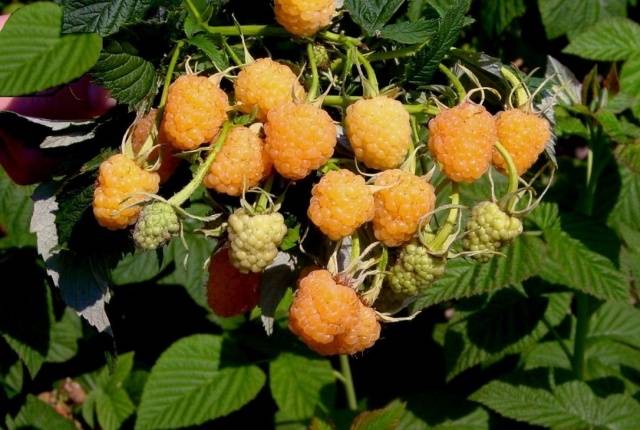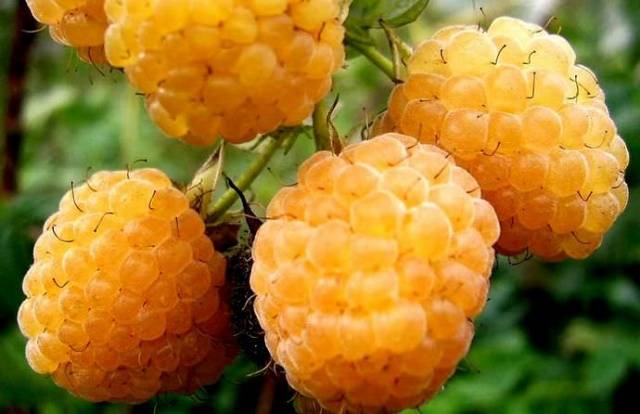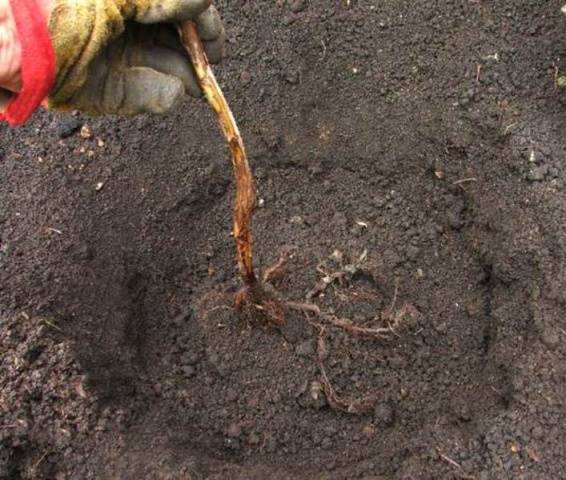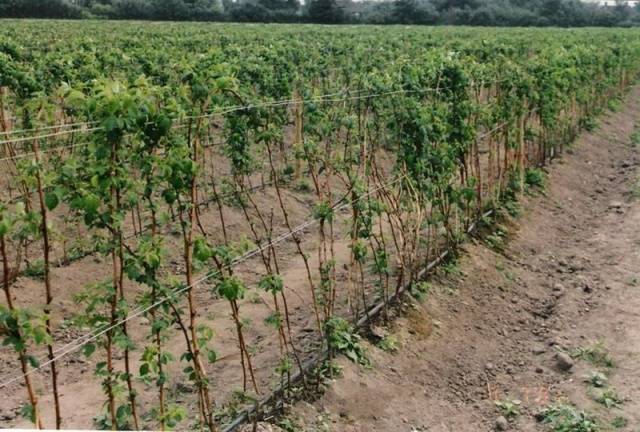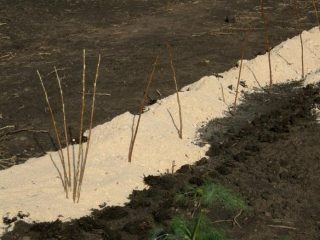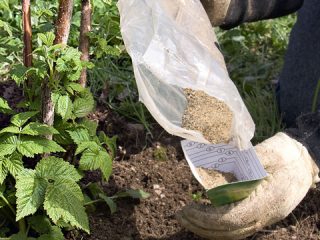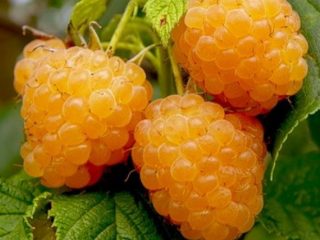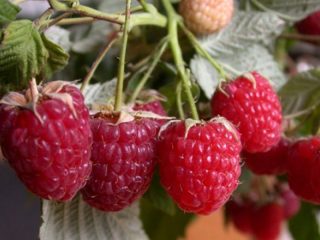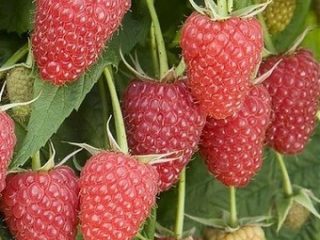Content
Today, choosing remontant raspberries is not so easy, because the range of varieties is extensive. That is why gardeners need information about the characteristics of raspberries, descriptions of bushes and berries. Remontant raspberry Apricot, unlike conventional plants, has golden-amber fruits.
The variety was created by Russian breeders back in 1996, but, unfortunately, has not yet been appreciated by many gardeners. I would like the unusual raspberry to receive its well-deserved place in the gardens.
Beneficial features
It should be noted that yellow raspberries have special properties compared to red fruits.
Firstly, the fruits do not contain dyes, so the berries can be safely consumed by small children and pregnant women: they do not cause allergies.
Secondly, Apricot raspberries contain a large range of useful substances:
- malic and citric acid;
- glucose, fructose and sucrose and fiber;
- Berries contain a lot of iron, calcium, cobalt, copper and other trace elements.
Thanks to this composition, the fruits and leaves of yellow-fruited Apricot raspberries are widely used in medicine as anti-inflammatory agents.Eating disorders and problems with stool can be solved by preparing a decoction of the leaves of the Apricot variety.
No less interesting is the chemical composition of the berries:
- sugar contains 10.2-10.4%;
- ascorbic acid in the range of 1.3-1.4% or 36 mg/%.
Description
It is difficult to understand the characteristics of an unfamiliar raspberry variety. Below we will give a detailed description of the bush and berries in order to subsequently decide whether to grow the plant in the garden or immediately refuse.
Bushes
Apricot raspberries, according to descriptions and reviews from gardeners, are distinguished by slightly spreading bushes of medium strength. The shoots of the second year of life are light brown or beige in color. The erect shoots of the variety have a small number of thorns curved downwards at the base.
Every year up to six shoots grow in the bush. They branch well. Young shoots of Apricot raspberries are light green and have a slight waxy coating on them.
The foliage is medium-sized, wrinkled, and lacks pubescence. There are small sharp corners along the edges of the leaves.
Berries
The flowers of this raspberry variety are medium-sized and white with a bright yellow center. Almost all of them are tied. The berries are shaped like a cone with a blunt tip. Ripe golden-apricot-colored fruits have slight pubescence, this is clearly visible in the photo. Each Apricot raspberry weighs on average about 3 grams.
Fruits with delicate sweet and sour pulp, the aroma is weakly expressed. Consumers believe that the variety’s berries are tasty and give it 4.5 points out of 5.
Advantages and disadvantages
- The variety is high-yielding; one bush, subject to proper agricultural practices, produces up to 3 kg of amber fruits. Apricot raspberries are unpretentious and frost-resistant. The presentation of the berries is excellent.
- Due to its high immunity, it is weakly affected by pests and diseases.
- The purpose of the remontant variety is universal: fresh consumption, suitable for making preserves, marmalade, and compotes.
Raspberries have a drawback: the transportability and safety of the berries is low.
Reproduction
To obtain new bushes of the Apricot variety, you can use different methods:
- shoots;
- root cuttings;
- green cuttings.
Let's look at each of them in more detail:
- Dig up a raspberry bush and divide it into parts. Each of them must have a growth bud.
- A healthy shoot is selected from the mother bush and dug up with a clod of earth.
- A young green raspberry shoot is cut off; the cut area must be treated with a disinfectant. After this, the cutting is placed in moist soil. The root system is formed in about 15 days. The raspberry seedling can be planted in the ground.
Landing Features
Apricot raspberries, although an unpretentious plant, still require compliance with basic agrotechnical standards. They also apply to planting seedlings in a new place.
Raspberry seedlings of any variety must be healthy, without damage to the root system. A good shoot contains at least 5 buds. Planting material can be obtained from mother raspberry bushes on the site or purchased from trusted sellers. For example, order seedlings from a nearby nursery or by mail from Becker, Gardens of the Urals, Gardens of Siberia.
Apricot raspberries can be planted at any time, but experience shows that autumn plantings bear fruit abundantly next season.
Preparing the bed
You should choose a well-lit place for raspberries. According to the rules, bushes are planted in the direction from north to south, so that each plant can be bathed in sunlight from morning to evening.
Groundwater should not be located high, otherwise the root system may die. Apricot raspberry loves fertile and loose soil, so before planting the soil is filled with nutrients. For each square meter contribute:
- a bucket of compost or humus;
- liter jar of wood ash;
- about 45 grams of phosphate fertilizers.
The soil is dug up and the roots are removed. weed. After this, trenches or pits are formed. The depth of the planting site should be at least 60 cm, and the width should be 5 centimeters greater than the root system. Before filling the soil, drainage from pebbles, old branches or currants must be placed at the bottom of the hole. Planting holes for raspberries should be 4-5 cm in diameter larger than the volume of the root system, and about 50-60 cm in depth.
Preparation of seedlings
When choosing raspberry seedlings, preference is given to healthy plants with well-developed roots. Any dry twigs or roots must be cut off. Before planting, it is advisable to soak raspberry shoots in Kornevin, sodium humate, or simply in a solution of wood ash. This will help the seedlings take root better.
Landing rules
Before planting Apricot raspberries, the pits or trenches are filled with water. When it is absorbed, make a mound in the center and “sit” the plant on it. After straightening, the root system should be around the mound and look straight down.
Sprinkle nutritious soil on top and compact it to remove air pockets around the roots. A bucket of water is poured onto each plant in two passes.
As soon as the water is saturated, the surface is covered with mulch. It not only prevents moisture from evaporating, but also warms the root system.
Tips for planting raspberries of any variety:
Care
Raspberries respond well to regular watering, mulching, loosening, pruning and feeding: traditional activities.
Watering
The Apricot raspberry variety produces excellent yields with abundant watering. But moisture should not be allowed to stagnate. This can lead to diseases of the root system and the appearance of pests.
Pruning and mulching
Pruning is an important event during which excess, fruit-bearing shoots and dried twigs are removed. Spring pruning of raspberries is necessary to shorten the shoots by 15-20 centimeters in order to speed up the formation of axillary shoots with peduncles.
In the fall, those shoots on which the berries have already ripened are cut out at the root.
Mulching helps prevent raspberry plantings from becoming overgrown with weeds and preserving moisture. To do this, you can use peat and straw.
Garter
To create stable plantings of Apricot raspberries and preserve shoots from breakage, gartering is done. If the raspberries are planted in a trench, stakes are driven in along the edges and a thick wire is pulled between them in two rows and the shoots are tied to it.
Top dressing
Raspberry bushes of the Apricot variety, according to descriptions and reviews from gardeners, are demanding in terms of nutrition. Plantings are fertilized several times a season. The first time it is better to fertilize the plants with green infusion. Pull out the weeds and pour boiling water over them. After two days you can water the raspberries. Grass sludge is used as mulch.During the season, especially during flowering and fruiting, it is good to water the bushes with an infusion of mullein or wood ash.
Pests and diseases
Yellow Apricot raspberries, according to the description of the variety, are resistant to diseases and pests. But preventive measures should still not be neglected. To increase immunity you need:
- Remove weeds from plantings and loosen the soil to destroy pest habitats.
- Cut out excess shoots to prevent dense plantings. The air between the bushes should circulate freely.
- Cut raspberry shoots must be burned, even if no diseases or pests are found on them.
- Carry out preventive treatments of the soil and the plants themselves with special preparations before flowering begins.
It is not difficult to grow the Apricot raspberry variety with yellow berries; the main thing is not to neglect agricultural technology. In autumn, with the onset of cold weather, the bushes are bent and buried.
